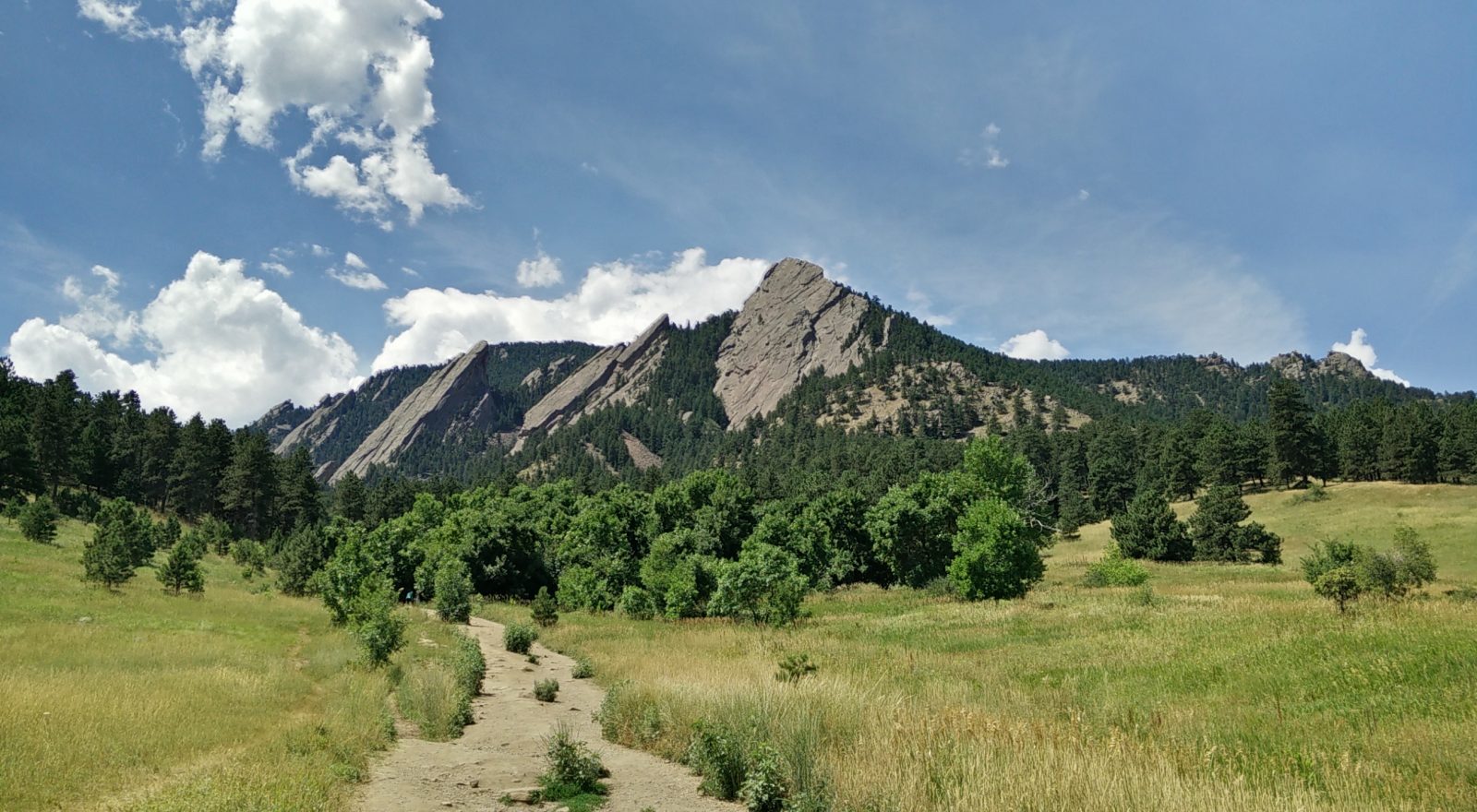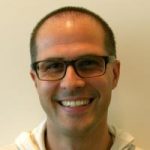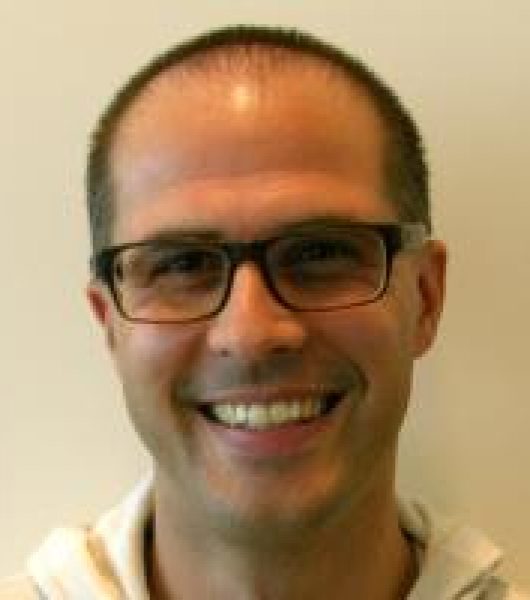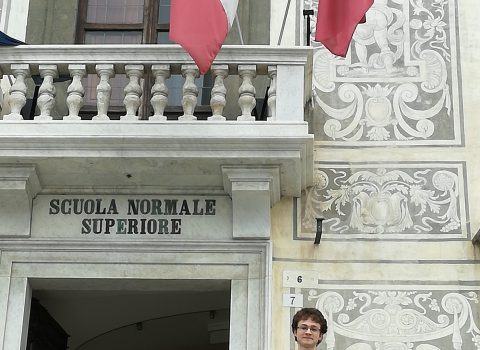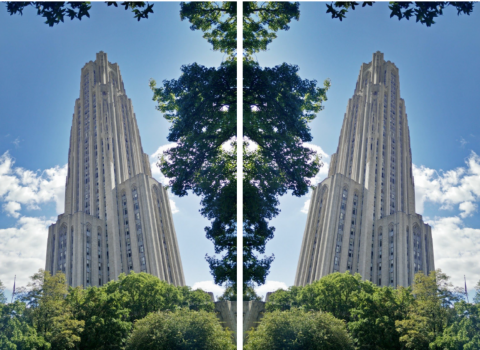
Mobility Story: Giovanni Garberoglio #2 Boulder, Colorado
The second part of a travel story in four stages, the generous sharing of the first experience of Mobility in the US.
But, by now, I was in the States! I had been awake for about 24 hours (sleeping in those small seats? impossible!), and when I exited the airport, it was early afternoon. I finally met Allan (yes, as you can imagine, he was completely different from the idea I had formed of him) who had kindly offered to pick me up at the airport and give me a ride home. In the blurring of intellectual abilities due to sleep deprivation, though, I notice a few things.
First: it’s very hot in Colorado (especially after 11 hours of air conditioning during the flight). Second, I like the place. Denver lies on a plateau (at a height of exactly one mile above sea level) and despite the view around is semi-desert hills, we head towards an imposing mountain range that stretches as far as the eye can see along the North-South axis: the Rocky Mountains, at the feet of which is the city of Boulder.
I arrive in the home of the guy who will host me for the first two weeks. I think it is a typical American residence: a one-floor house with a garage next to it, a small garden on the front and a bit ‘bigger yard on the back. My room is really minimal, but I will not use it much except to sleep after all. There’s a nice gazebo in the yard where temperature is really comfortable in the evening (and where wifi signal is great). The guy who hosts me speak Italian much better than he writes it, and is very kind. His name is Andre, but he confesses that he was born Andrea. In the US, though, it’s a name for females, and after being teased for years he had it changed at the earliest opportunity.
The next day, life in the laboratory begins. Almost.
I show up at nine, and my colleague has to pick me up. NIST is a federal laboratory, and security measures are really tight. They took me to a gatehouse where a soldier takes my passport details after xraying my backpack. I receive a temporary badge, which will be valid as long as the various “system” checks will not give the green light to be eligible for a regular badge. In the meantime, it’s best if I am escorted, and to enter the building, I have to make arrangements with Allan so he can open the door for me. My office, which is equipped with electronic locks, will remain open until I am given a badge that can open it.
All this goes on for a few days. In the meantime I can’t use any form of internet tat work either. No problem: I would download what I need from home, and I use my “distraction-free” days to plan the work and complete the safety and IT security courses that visitors are required to take. These are online tests an I take them on a computer that is assigned to me with a temporary login and a nice welcome message that reminds me that I’m using a federal tool, which does not give me the right to any form of privacy. Regulations on information security are much stricter: with or whithout badge, I shouldn’t even think about using my cell phone at the lab.
In theory, I think it’s even forbidden to carry it with you, but “everyone does it” and I adapt. But I take the good habit of switching it to “airplane mode” every time I go in, you never know… After a few days I am cleared and assigned a permanent badge. In the mean time, I also figured out where to buy the capsules for the coffeemaker, and I even got myself a nice mug, in perfect US style. By now I act almost like a native.
Life in the laboratory goes on exactly as I had expected. I show up at around 9 in the morning, I leave at 5 in the afternoon, and I can work in peace.
From Italy comes nothing too time-consuming, and I can create a pleasant and productive routine for myself. As I mentioned, my goal was to learn a new programming language and devote myself to the water calculations. While I “study”, there is still a research project – in collaboration with Allan – now on the home straight, so I spend a bit of time on that as well.
Boulder is a beautiful city, and I let myself be fascinated by it right away. A very large area is occupied by the University of Colorado at Boulder campus, just north of which is “downtown”. The rest is surrounded by classic American houses and the occasional malls. There are a lot of cycle-pedestrian paths, including one along a stream that flows diagonally across the center, a residential area and the campus. I like the campus a lot. I walk through it every day to get to and from work. There’s summer break in July and therefore the campus is closed. It looks like a small ghost town in “new Tuscany style”, but I find it very pleasant to look at.
After a few days I walk across it, I start wondering: how much would it cost to enroll in a university so beautiful? I ask Allan, who tells me that if you are a Colorado resident, the cost is probably around $ 5,000 a year, while if you are out-of-stater state (both US and foreign) tuition increases, a lot.
He can’t tell me exactly how much, but his estimate is between $ 15,000 and $ 20,000 a year. To which you must add food and lodging (most attentive readers have got it by now that it is by no means cheap) and at this point even a car. Unfortunately, at this time I don’t have a patron so I will have to put my dream “back in the drawer”, but if anyone would like to fund me, I am ready to talk about it…
The Rocky Mountains start Just west of Boulder. I start diligently exploring them every weekend. Allan comes along the first time, and we go hiking along a quite popular trail in the area. The trail starts from Moffat Tunnel , about an hour’s drive from Boulder, from which a long trail branches off that will lead up to the lakes of Rogers Peak, over 10000 feet high ehich in Colorado is more or less the tree line. At the end of the day we had walked more than eight miles, under a beautiful blazing sun and peak temperatures around 90 F. [Note: slightly above 32° C since T° C = (T° F – 32) * 5/9]
Welcome to the US, the last stronghold against worldwide metric imperialism! But let us look at the bright side: living it is a great workout for mental workout. Three feet are about one meter, one mile is about a kilometer and six hundred meters (which is regularly approximated to a kilometer and a half), one inch are two and a half centimeters, a pound is half a kilo, and the conversion from Fahrenheit to Celsius I never managed to learn… But I realized that when the weather forecast called for temperatures close to 90 F, it meant it would be REALLY HOT! Anyway, as a good native I never set out to walk without plenty of water.
Over the following weekends, I set out to explore the area near Boulder. The first mountains you bump into just outside the city are called Flatirons because of their shape, but I soon find out there’s more to it. There are many trails that start from the city and meander in the Flatirons and in many cases run along a conveniently flat rock wall. Under the summer sun these rocks heat up so much that I’m sure I could grill something on them, and even walking close to them you can feel the hot air.
I often come back home in the evening a little ‘battered”, both because of the long walk, and the very high temperatures. I console myself by seeing that even the well-adapted local wildlife suffers the extreme heat every so often.
But unlike the local wildlife, I had many other opportunities of relief from the scorching heat. Sometimes even too many. One of the unsolved mysteries of the United States – that have failed to resolve even after repeatedly having asked many people who were born and lived there – is the mania to keep air conditioning at full blast during the summer.
My office was no exception. Yes, it had a thermostat that allowed a minimum control over temperature, but I could “choose” my preference between 65 and 70 F. You can easily do all the calculations you need, but I assure you that the result will be: cold! Enough to make a habit of keeping a sweatshirt in the office, which I wore regularly. But as you can imagine, indoor temperatures 10 to 15 degrees (celsius) lower than outdoor ones could lead only to one result: an annoying and constant sore throat accompanied me for several weeks.
Of course, air-conditioning (even if wearing my sweatshirt) was still a nice relief from the Boulder heat, but the real relief I found over the weekends. Boulder is famous for its microbreweries, and as a good scientist I had taken the commitment to sample each and one of them meticulously, dedicating every Saturday lunch to this small personal project. The first beer place I try on Allan’s great advice is run in a bit special way: as oon as I step in, a waitress asks me how many people were in my party. Just me, and she tells me she doesn’t have anything at the moment. But if I want to wait I might get a table in about 20 minutes.
In the meantime, I can go to the bar and ask for free samples of the various beers they offer around this time of the year. Now that’s collaborative spirit between scientists!
Meanwhile she asks me a name to take a reservation. Almost without thinkining, I blurt out my first and last name, in a perfect Italian that she probably was not expecting. There and then she gives me a somewhat weird look – between amazed and resigned – and starts trying to write it down on the tablet she was using to take orders. I know, my name is not easy to understand and write even for an Italian so I say: “Look, if that’s okay with you, can call me Joe.” She looks up and smiles, very relieved, “Okay, Joe! I’ll call you when it’s ready. Help yourself at the bar. ”
There are hundreds of beers to taste. A lot, really. Here in Italy I am used to juggle at most between pale ale, red, dark, and the occasional Weizen. There, I discover the existence of Porter beers (very dark and variously flavored beers, including the coffee porter that actually tastes like a sparkling, cold and alcoholic espresso), I find the more familiar term Lager, I taste some flavored beers and also try a kind named India Pale Ale (friends call it IPA).
It was love at first sip! Delicious!
Highly hopped with a nice bitter first impression that then widens in other flavors, typically resinous or citrus, but always very clear.
IPAs would turn into a welcome (and refreshing) company for the duration of stay in the US, typically accompanied by a nice dish of local food: burgers with coleslaw (cabbage salad).
And while we’re on the subject of food. Actually, one of the most frequent questions I have been asked by those who knew I had spent time in the States was: “How was food?”. Well, fine! The “American food” = “junk food” assumption is not always valid. It is true that for the same money, you get higher quality and perhaps bigger sizes, but if you are willing to spend more, food is great also in the US. You can have a burger with fries and a soft drink at a fast food restaurant for less than $ 10 (maybe even $ 5 if you ask for the specials), but in the places I used to go I have never spent less than 25 (Did I tell you the US are expensive?).
One more thing about food: in the US you can find anything. I mean just about anything, as long as it’s just minimally suitable for consumption by humans. And I set out on a hunt for things that you can’t find in Italy (yet). Two things deserve special mention: protein bars with cricket flour (yes, you got it right) and flour products with genetically modified ingredients. The first one I did not like much, not so much for the crickets but for the fact that among the main ingredients was the more prosaic date pulp that doesn’t meet my taste. Bread and cookies produced with (I think) transgenic wheat haven’t made me grow more limbs, change skin color, peel my skin let alone go to the hospital.
The one that could have sent me to the hospital, due to indigestion (but nothing happened, do not worry) is peanut butter, which in the US comes in any shape, way and manner, and is the main ingredient in a lot of snacks, sweet and salty alike. Among my favorite: chocolate ice cream with peanut butter and peanut butter cups. Just thinking of it makes my mouth water! Yeah, I definitely risked having to get bigger clothes.
However the adventure in Colorado went very well, and not just because of the weekends around the Rockies (or searching for new kinds of IPA). The part of the project that I intended to complete there was brought along very well. I realized that a modern programming language requires a much more thorough study than I expected, but – most importantly – exercise, exercise, exercise! I found myself rewriting all the routines I had done after the first implementation did not convince me, and still I am not sure that the solution I found is the most clever one. Besides that, also the project that was in the pipeline was completed without much trouble. In short, after a month I was there we noticed a small discrepancy between our results and the experimental data, and further analysis showed that, unfortunately, I had made a somewhat poor choice about a parameter entered in the equations to be solved, which had introduced a small, but significant, systematic deviation from the “correct” result, a particularly evident discrepancy at high temperatures. From a certain point of view, I was sorry that I had to “throw away” a few weeks of calculations, but that’s how science works. You do the best you can, which also means you develop a good dose of self-criticism, acknowledge mistakes when they occur (and I can assure you that it happens!), and take it from there
But at this point, August as well is coming to an end. It is time to re-pack my bags and say goodbye to beautiful Colorado.
Pittsburgh, I’m coming back!
